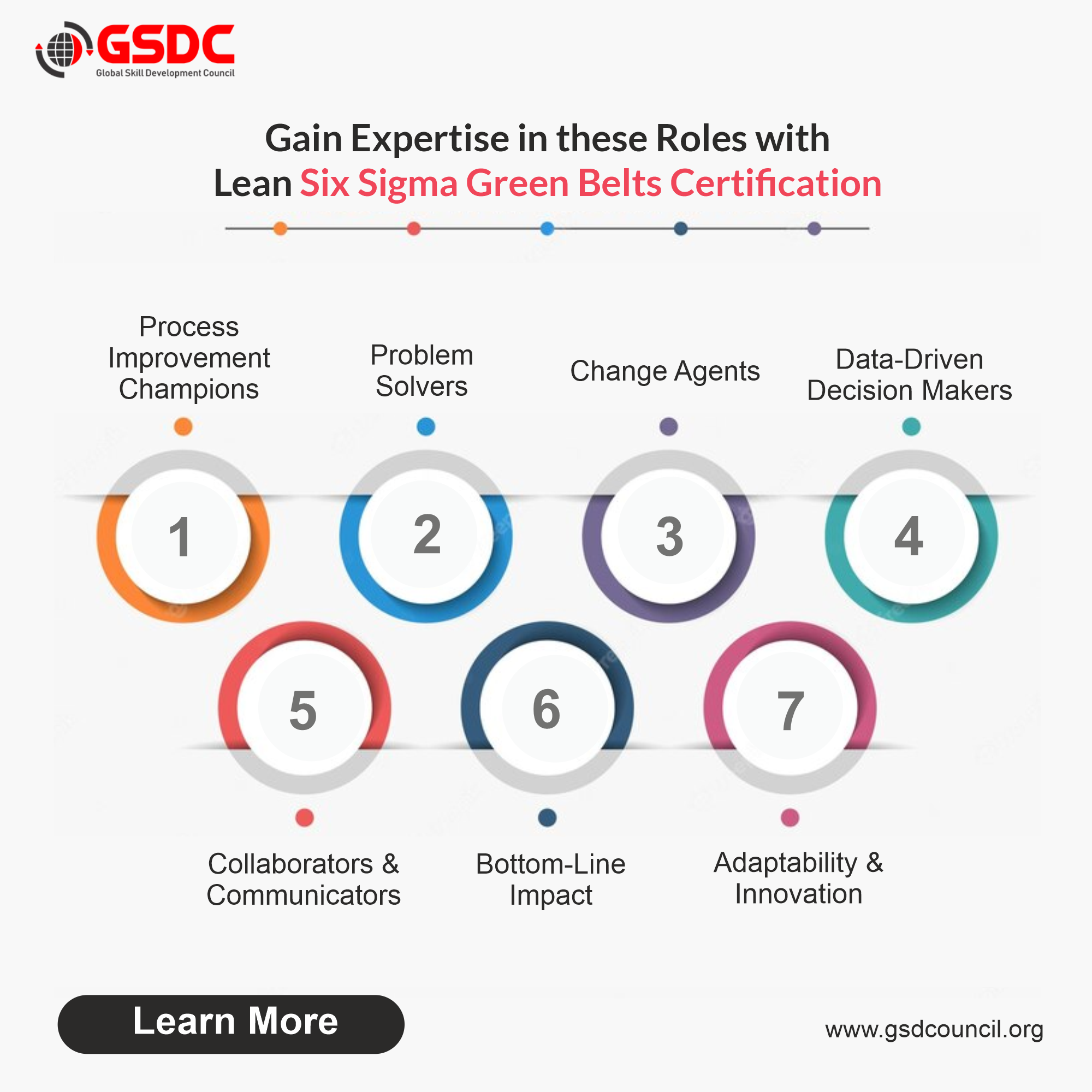Obtaining a Lean Six Sigma Green Belt Certification equips you with a comprehensive skill set that empowers you to drive process improvements, solve complex problems, and contribute significantly to organizational success.
Lean Six Sigma Green Belts play a crucial role in organizational transformation. These experts are important change agents in an organization, discovering inefficiencies, enhancing procedures, and promoting a continuous improvement culture.
Here's what you can expect to learn from Lean Six Sigma Green Belt Certification:

· Process Improvement Champions
· Problem Solvers
· Change Agents
· Data-Driven Decision Makers
· Collaborators and Communicators
· Bottom-Line Impact
· Adaptability and Innovation
Process Improvement Champions: Lean Six Sigma Green Belts are at the forefront of process improvement initiatives. They actively identify areas for improvement, gather data, analyze processes, and implement changes that lead to increased efficiency and reduced waste.
Problem Solvers: Green Belts use structured methodologies like DMAIC to solve complex problems. They delve into root causes, use data-driven approaches, and implement solutions that directly address organizational challenges.
Change Agents: Organizational transformation often requires changes in processes, behaviors, and mindsets. Green Belts act as change agents, guiding teams through these changes, mitigating resistance, and ensuring successful implementation.
Data-Driven Decision Makers: In the midst of transformation, data is crucial. Green Belts collect, analyze, and interpret data to make informed decisions. This ensures that changes are not based on assumptions but rather on evidence.
Collaborators and Communicators: Green Belts collaborate with cross-functional teams, acting as liaisons between departments. They effectively communicate the reasons for transformation, the goals, and the progress to stakeholders at various levels.
Cultural Transformation: Organizational transformation often involves changing the culture. Green Belts contribute to creating a culture of continuous improvement, where employees actively seek ways to enhance processes and contribute to the organization's success.
Training and Development: Green Belts often train team members in Lean Six Sigma concepts and tools. This empowers others to think critically, adopt data-driven approaches, and participate in improvement initiatives.
Standardization and Best Practices: Green Belts work to standardize improved processes and document best practices. This ensures that improvements are sustained over time and can be replicated across the organization.
Efficiency Enhancement: Green Belts focus on eliminating waste, reducing cycle times, and increasing efficiency. This directly contributes to cost savings, improved resource utilization, and faster delivery of products or services.
Bottom-Line Impact: By improving processes, Green Belts contribute to increased productivity, reduced operational costs, and better customer satisfaction. These factors positively impact an organization's bottom line.
Adaptability and Innovation: Lean Six Sigma encourages adaptability and innovation. Green Belts are equipped to suggest and implement innovative ideas that align with an organization's strategic goals.
Project Management: Green Belts apply project management skills to keep transformation initiatives on track. They set goals, create plans, monitor progress, and ensure timely completion.
In summary, Lean Six Sigma Green Belts are instrumental in driving organizational transformation. Their expertise in process improvement, problem-solving, data analysis, communication, and change management empowers them to lead initiatives that reshape processes, improve efficiency, enhance quality, and create a culture of continuous improvement. Through their efforts, they contribute to the long-term success and competitiveness of the organization.


No comments yet